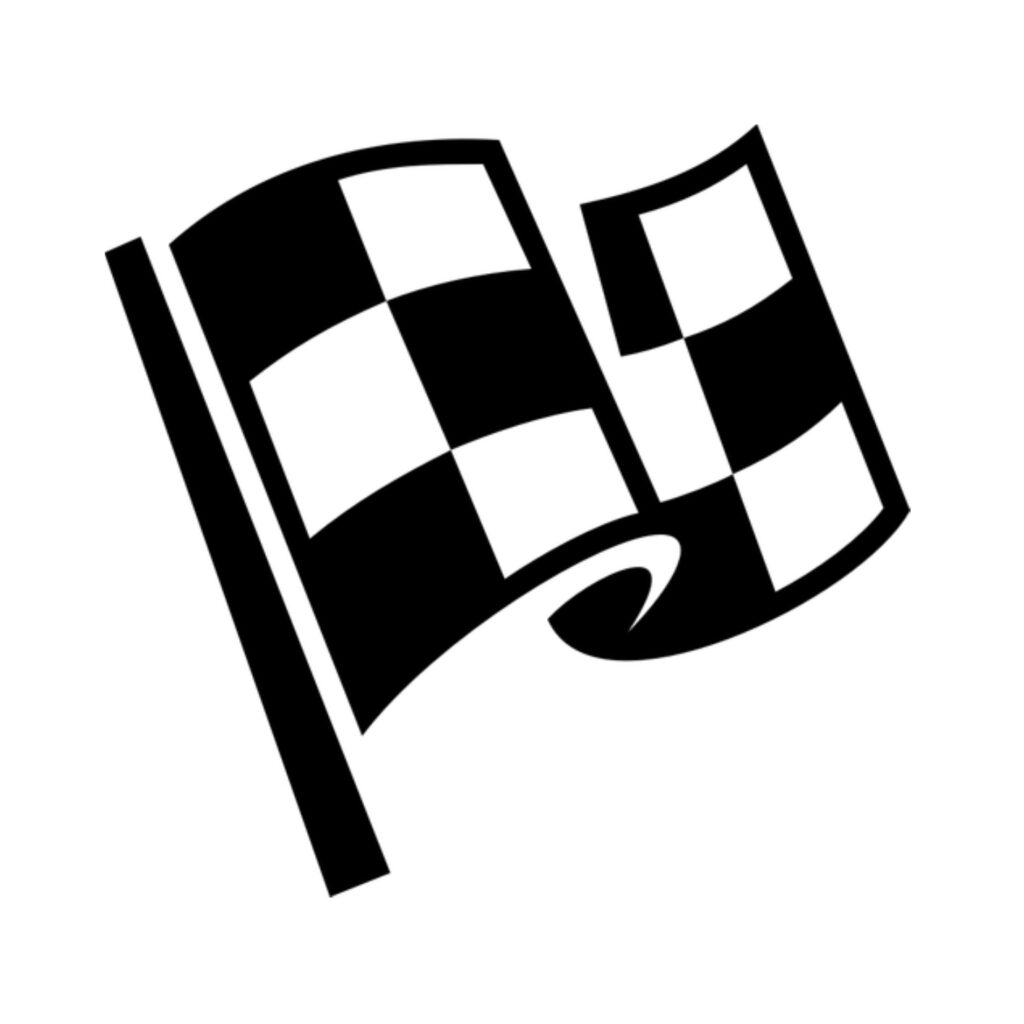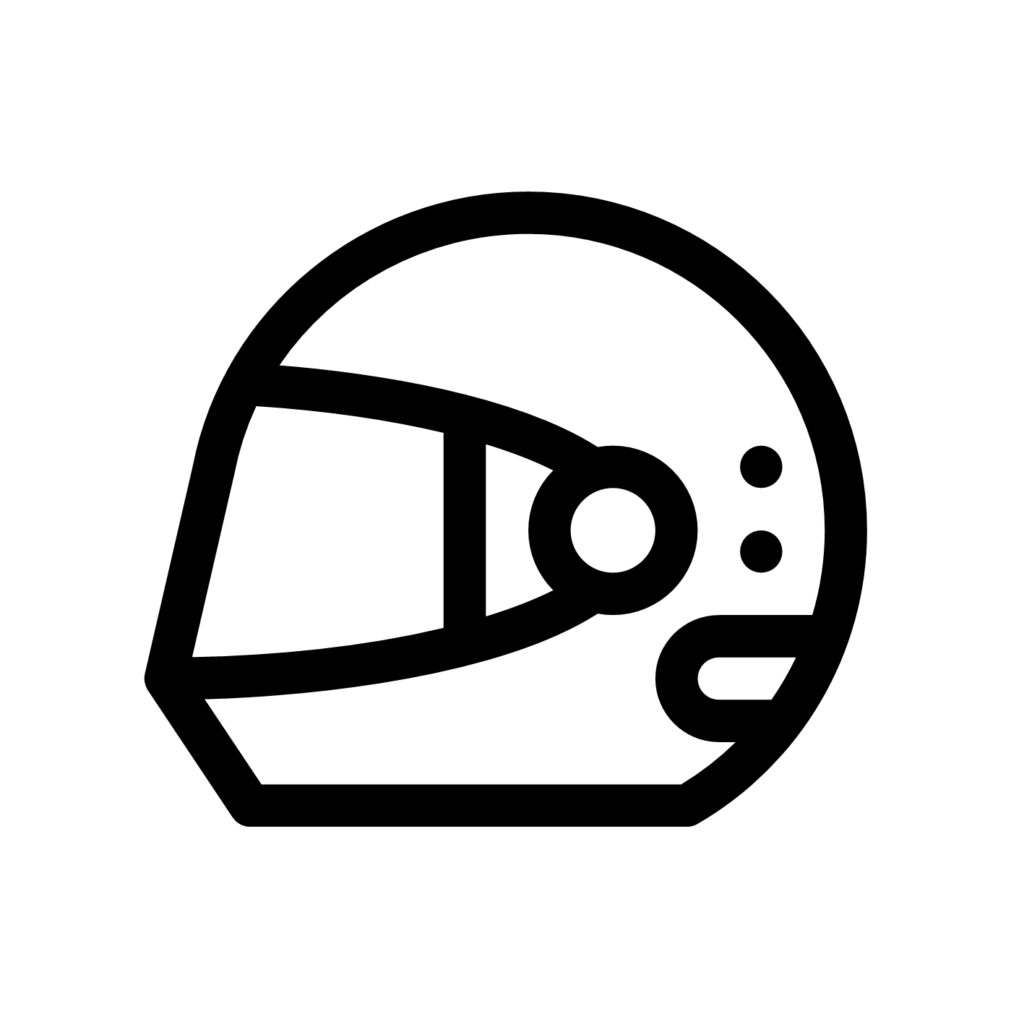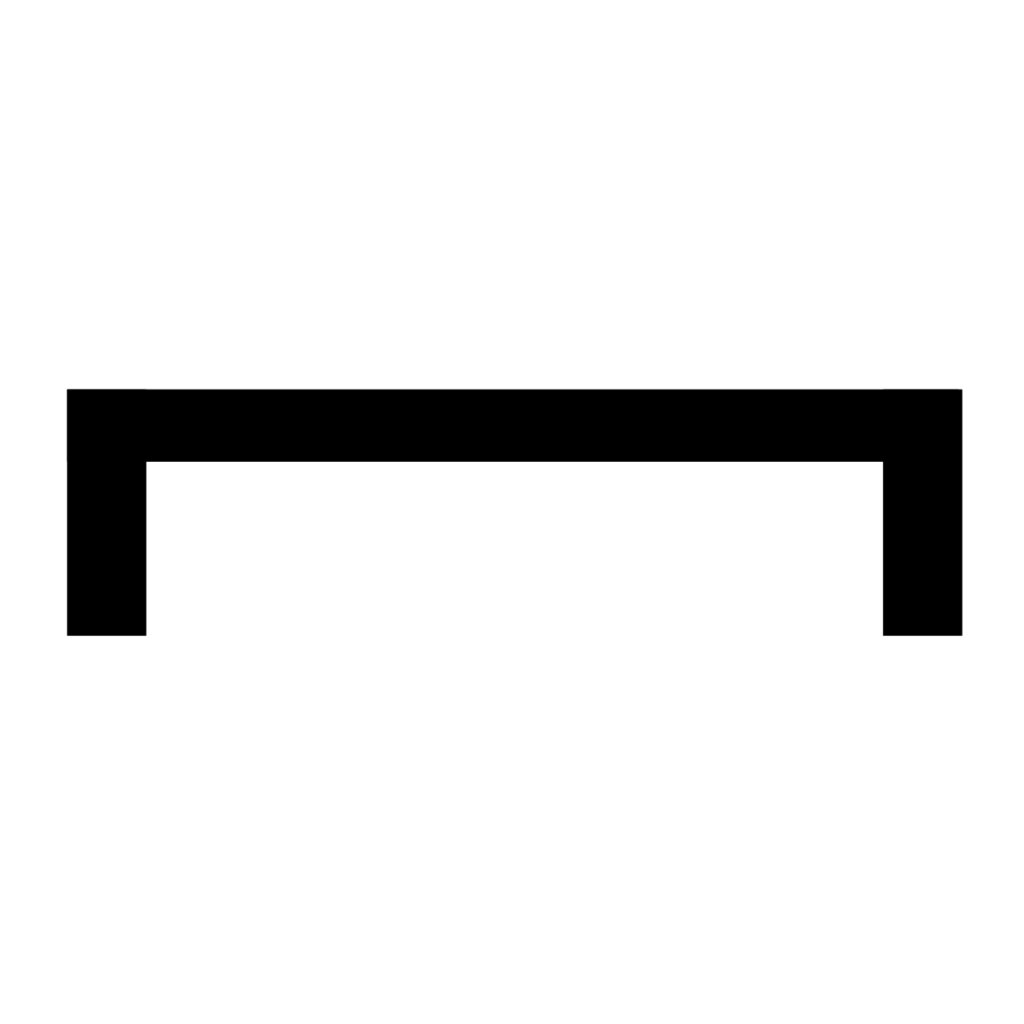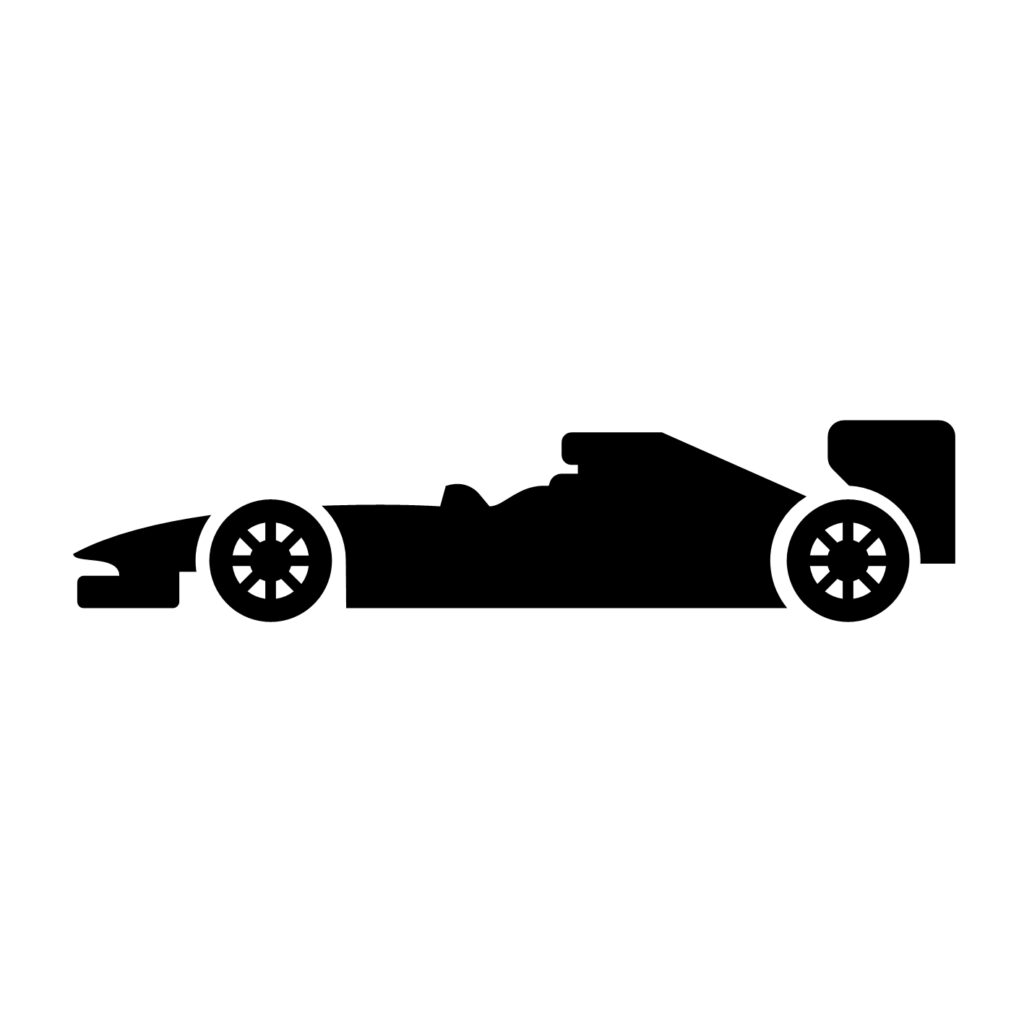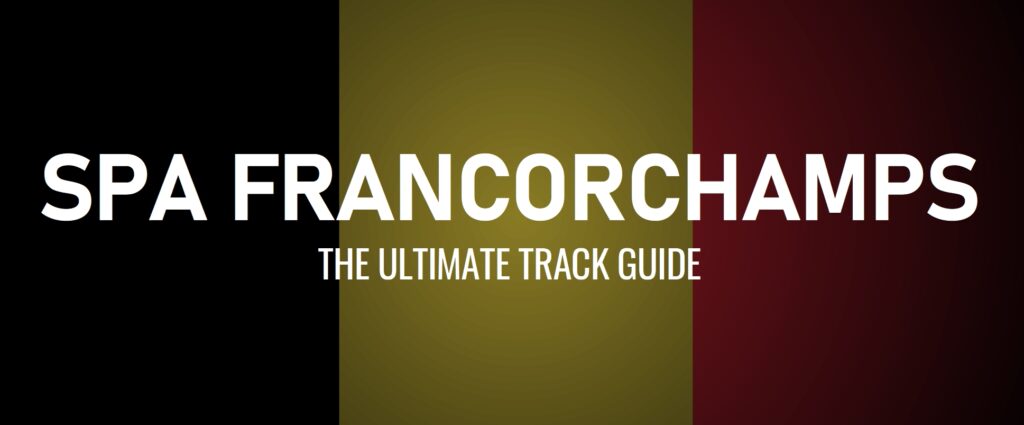
Situated in the heart of the Ardennes Forest, the ferocious Circuit de Spa Francorchamps is one of Formula 1’s legendary tracks. The longest circuit on the calendar, with its own micro-climate and massive elevation changes, means the Belgian Grand Prix is always unpredictable.
| FIRST F1 RACE | 1950 |
| TRACK LENGTH | 4.352 miles |
| NUMBER OF LAPS | 44 |
| NUMBER OF TURNS | 19 |
| MOST POLES | Lewis Hamilton (6) |
| MOST WINS | Michael Schumacher (6) |
Spa Francorchamps is one of the original racing circuits, as racing moved from city to city races to racing around circuits. The original nine mile circuit linked the towns of Malmedy, Stavelot and Francorchamps in a triangular shaped course.
Circuit de Spa Francorchamps, which incorporated public roads, was designed in 1920 by Jules de Thier and Henri Langlois Van Ophem and held its first race soon after. For the first years of its existence, the track held only motorcycle races, until – following the success of the 24 Hours of Le Mans race – Spa Francorchamps held its own day long race for cars.
The first Belgian Grand Prix was held in 1925, and was won by Antonio Ascari, the father of future Formula 1 World Champion Alberto Ascari. Further Grands Prix were held here from 1930 onwards, with the iconic Radillion and Eau Rouge corners being added to the track in 1939. The 1939 race itself was held in treacherous conditions, and led to the death of Richard Seamen, who crashed out from the lead.
The 1939 event was the last held at Spa Francorchamps before the onslaught of World War II. The area around the circuit played a role in the war. The Battle of the Bulge, which was the last major German offensive campaign on the Western Front, took place in the Ardennes forest. The battle saw over 20,000 deaths, including around 3,000 cilvilians.
Racing returned to Spa Francorchamps in 1947 on a slightly alternated track, which saw the average speed increase. The track held a round of the inaugural F1 World Championship in 1950, and hosted the Belgian Grand Prix annually each year until 1957, when the Suez Crisis and the increased price of fuel led to a lack of funds for the race to be held. For 1958, the race returned with a resurfaced track and some new facilities – though the dangerous nature of the circuit was noted by drivers and fans alike.
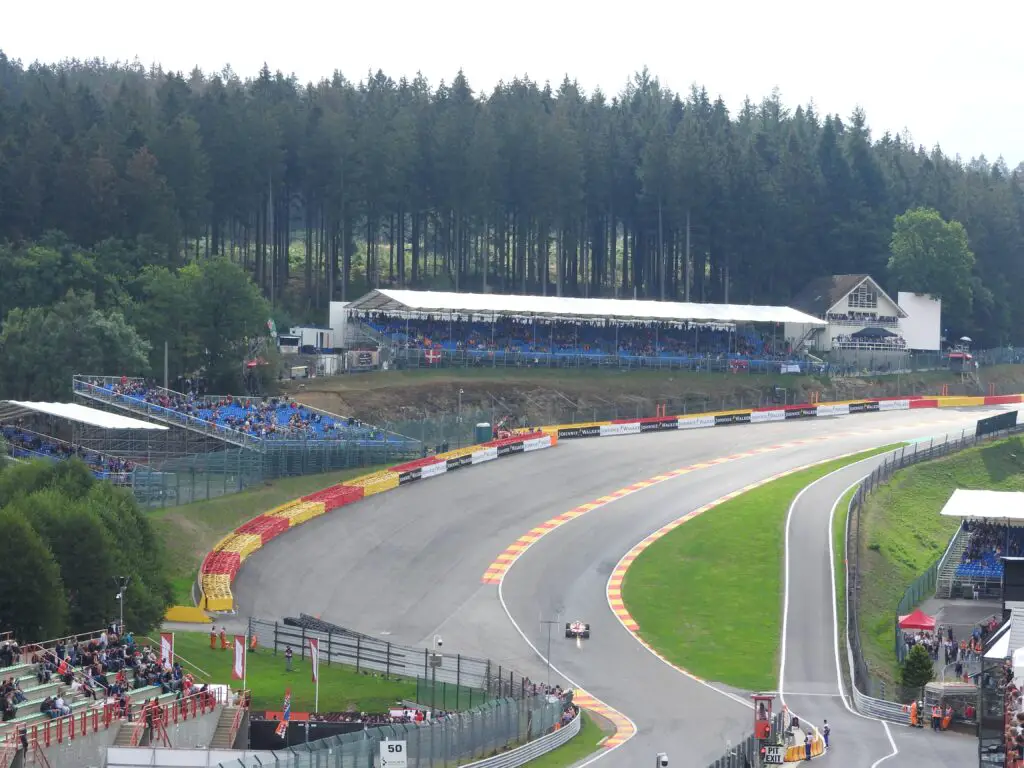
After a year off in 1959, the Belgian Grand Prix returned once again in 1960, but it was to be one of the darkest weekends in Formula 1’s history. Stirling Moss suffered one of the worst crashes of his career during practice, which would put him out of action for much of the rest of the year. Mike Taylor then suffered a career-ending accident, as he crashed into the trees.
Two drivers suffered fatal accidents during the Grand Prix itself – Chris Bristow, whose lack of experience saw him crash into an embankment and suffer fatal injuries and Alan Stacey, who was hit in the face by a bird in the same area of track just five laps later. The incident caused him to lose control of his car, and he crashed into a field 25 feet lower than the track. The Grand Prix continued despite the incidents and Jack Brabham eventually took the win.
No change was made to Spa Francorchamps following the crashes, with the race continuing without serious injuries for the next years. Jim Clark won the race four years in a row between 1962 and 1965, despite being terrified of the track after witnessing the aftermath of Bristow’s accident. Some safety barriers were added in 1963, but this did little to appease the drivers.
Jackie Stewart’s crash in the 1966 Belgian Grand Prix saw the start of a drivers revolt for more safety. Stewart suffered a huge accident at the Masta Kink – one of the legendary sections of the old track. The Scottish driver survived the impact of travelling through a hut and hitting a telegraph pole, but was trapped in his fuel soaked car for over half an hour. His situation was helped only by two fellow drivers who had to take spanners from spectators in order to help him escape his precarious predicament.
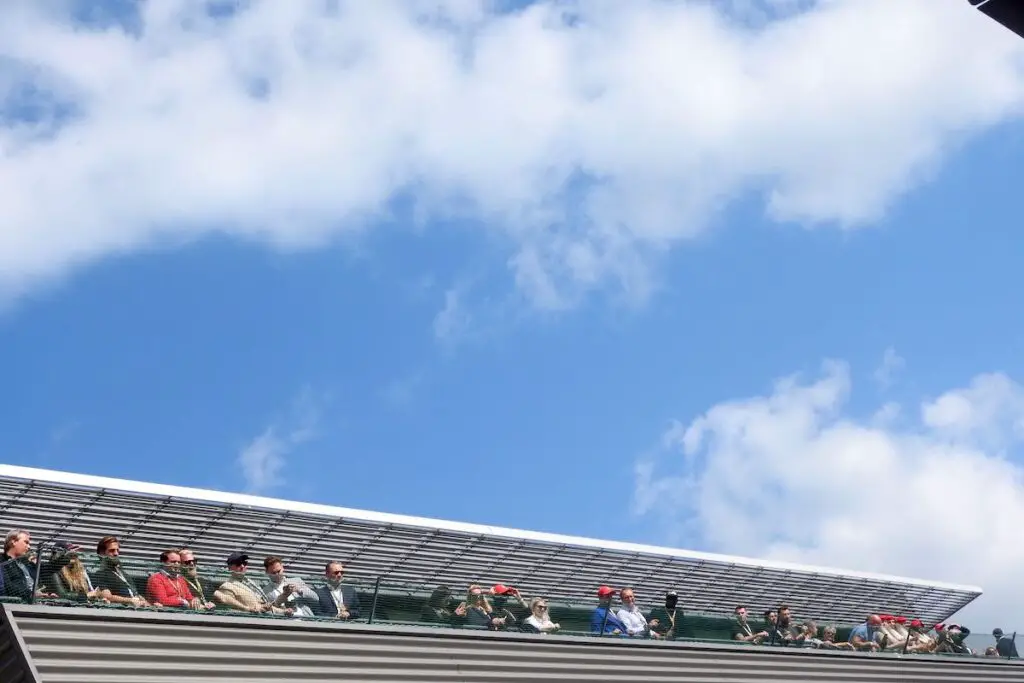
The following year, still with no changes to the Spa Francorchamp’s safety, Mike Parkes had a career-ending crash which left him in a coma for a week. In 1968, Bruce McLaren took the first ever victory for McLaren but there was further trouble. Brian Redman crashed into a stationary car, which caused him serious injuries.
By 1969, the drivers had finally had enough. Jackie Stewart visited the track and campaigned for better safety ahead of that year’s event, but the organisers were not willing to pay for the work to be carried out. The race was cancelled due to this.
For one final time in 1970, F1 took to the full 14km Spa Francorchamps track, with added barriers and a chicane designed to slow the cars down. The situation was untenable though, and the cars had simply become too fast for the track. The Belgian Grand Prix relocated to Nivelles and Zolder, with the latter hosting the majority of Belgian Grands Prix in the 1970s.
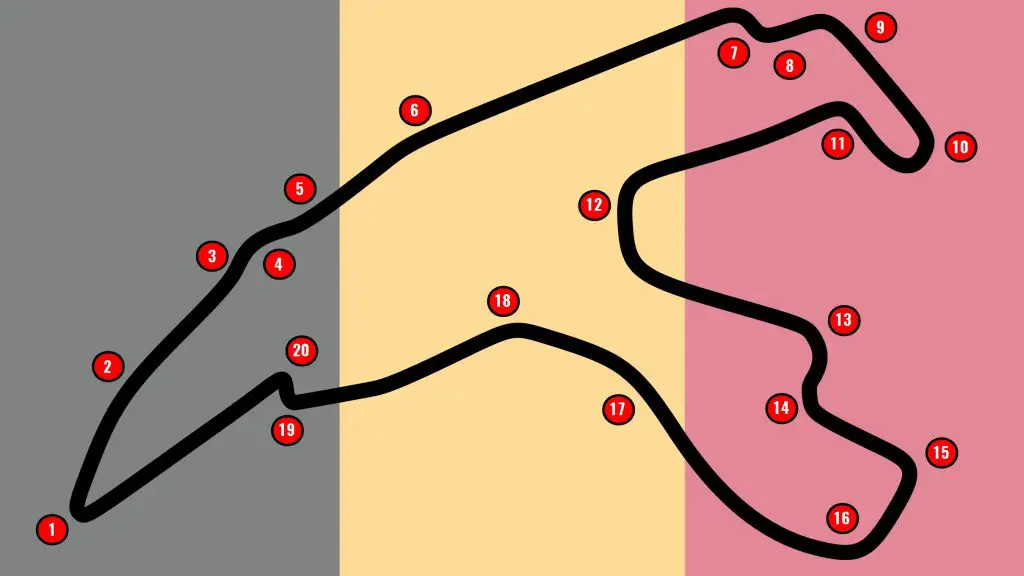
Formula 1 eventually returned to Spa Francorchamps in 1983. The track had undergone a major overhaul, which saw the length of the course shorted to 4.3 miles. The circuit had better internal access in case of emergencies, and also kept some of the iconic corners from the old layout. The first race was a success, and the track was well received by drivers and fans. After one last visit to Zolder in 1984, Spa Francorchamps became the permanent home of the Belgian Grand Prix in 1985.
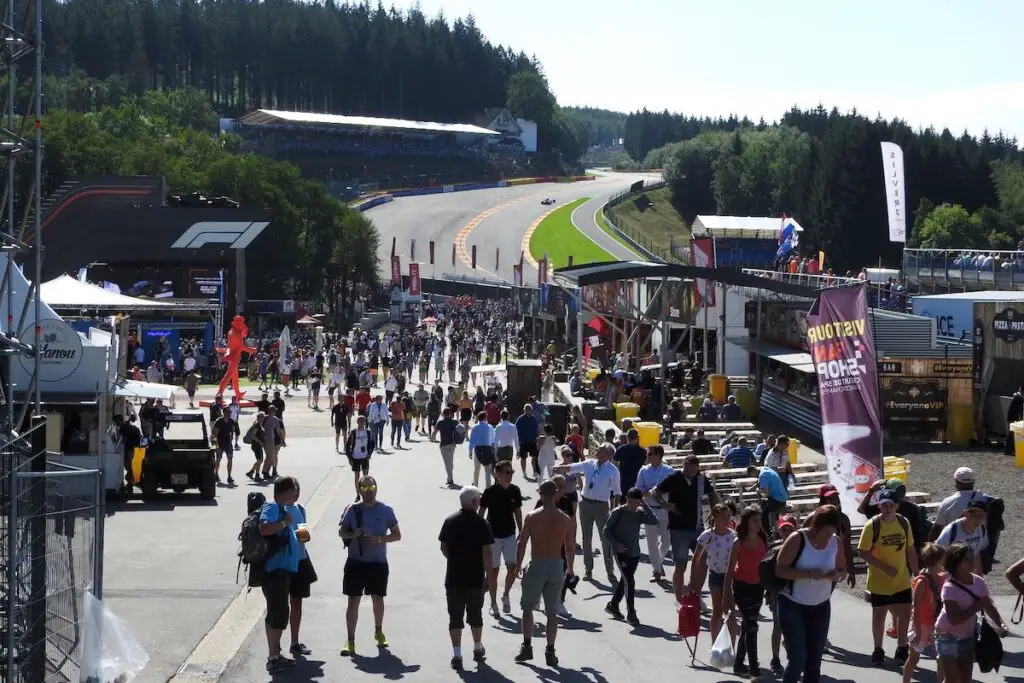
The 1985 event wasn’t without controversy, though, as the newly laid track surface began to break up after Second Practice, leading to the abandonment of the rest of the race weekend. The Grand Prix was eventually re-scheduled for three months later.
Ayrton Senna won four races in a row at Spa Francorchamps between 1988 and 1991. Following Senna’s fatal accident at the Imola track in 1994, and also as a result of Alex Zanardi’s huge accident here in 1993, a chicane was added at the bottom of the Eau Rouge complex. The chicane was then removed ahead of the 1995 race. The racing continued at Spa Francorchamps with some memorable and highly dramatic moments in the late nineties. Up until 2000, parts of the circuit remained public roads, though the circuit is now a fully permanent facility.
As a result of tobacco advertising being banned in F1 due to European law, the 2003 race was left off the calendar, but the sport soon returned to Spa Francorchamps in 2004. The track had changed slightly, with the bus stop chicane toward the end of the track being revised.
In 2006, renovation work led to Spa Francorchamps being taken off the final calendar, as it wouldn’t be ready in time due to the event organisers going bankrupt. The race returned in 2007, with thanks to funding from the Wallonia government, and hasn’t been off the calendar since. For 2007, there was a new pit-lane and paddock complex with the final turn and the first hairpin being moved slightly to allow extra room for the new facilities.
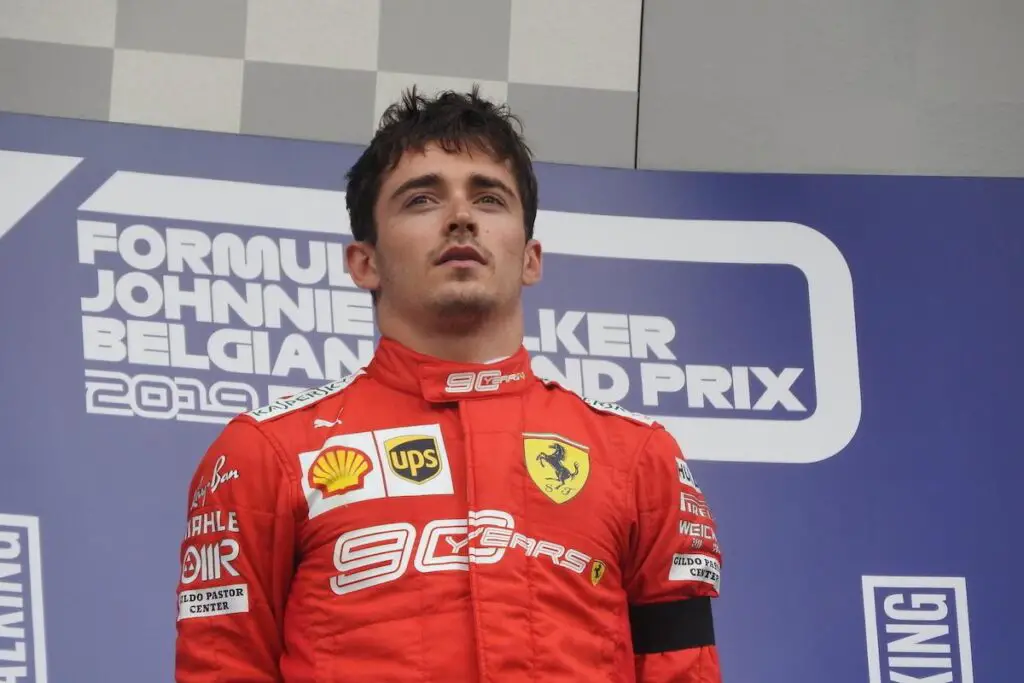
It was announced in June 2018 that the circuit would remain the host of the Belgian Grand Prix until at least 2021. Spa Francorchamps had been unable to secure a long term future on the calendar, signing single-year deals. However, in January 2025, Formula 1 announced a longer-term deal for the Belgian Grand Prix. The race will become a rotational round from 2027 onwards, losing its slot on the calendar in 2028 and 2030. The new contract runs until 2031.
LEARN MORE ABOUT SPA FRANCORCHAMPS
2024 BELGIAN GRAND PRIX RECAP
One-stopping Russell won a thrilling 2024 Belgian Grand Prix on track by half a second but an underweight car meant that Mercedes team-mate Hamilton inherited the victory.
As usual at Spa-Francorchamps, rain affected play when it came to the qualifying hour for the 2024 Belgian Grand Prix. Max Verstappen secured the fastest time in a damp Q3 but a 10-place grid penalty for exceeding the limit of four engines for the season dropped him to 11th on the final starting grid.
Charles Leclerc inherited pole position as a result of Verstappen’s penalty, with the other Red Bull of Sergio Perez lining up alongside him on the front row. The Mercedes and McLarens were next in the starting order, with Lewis Hamilton, Lando Norris, Oscar Piastri and George Russell completing the top six on the grid.
Leclerc held his lead at the start, with Hamilton finding a way by Perez in the battle for second place, while Norris lost three positions from where he started. On Lap 3, on the Kemmel Straight, Hamilton used DRS to seize the lead of the race. On Lap 11, Hamilton’s team-mate became first of the frontrunners to pit, while Verstappen – who had made his way up to eighth in the opening laps – was also in.
Hamilton pitted on Lap 12 along with Piastri, who Russell was able to pass as a result of pitting earlier, only to be re-passed on the Kemmel Straight. One lap later, Piastri pulled the same move on Perez to gain another position. By Lap 21, Russell had closed in on the back of Perez and overtook in the same area of track. The order ran: Hamilton, Leclerc, Piastri, Perez, Russell, Verstappen, Norris as the race reached its halfway point.
Whilst most drivers were ready to pit for the second time, Russell suggested that his team consider a one-stop strategy. As everyone else pitted for fresh tyres, Russell moved to the front of the field with a five second advantage over his team-mate. Meanwhile, at the end of the Kemmel Straight, Piastri went around the outside to clinch the final podium position from Leclerc and set off in search of the Mercedes ahead.
Hamilton continued to close on his team-mate as the laps ticked by, closing the gap to under a second in the final few laps. Hamilton was well within DRS but Russell held off his team-mate to cross the finish line first, with Piastri a close third.
After the race, however, Russell was disqualified from the Grand Prix as a result of his car being underweight. Mercedes chose not to appeal the decision. Hamilton inherited the win, Piastri was promoted to second and Leclerc claimed the final step on the podium.
SPA FRANCORCHAMPS FAST FACTS
- It takes around 22 seconds to drive through the pits at Spa Francorchamps.
- There is around an 80% chance of a Safety Car during the Belgian Grand Prix. The 1997 Belgian Grand Prix was the first time that a Formula 1 race began under a safety car.
- In the early days of F1, the field was smaller for this Grand Prix than it was at others due to the track’s reputation. Some drivers, including Jim Clark, did not like racing at the track and many missed the race due to their concerns.
- 214mph is the highest speed achieved at Spa Francorchamps, on the run to Turn Five.
- Michael Schumacher, who made his F1 début at Spa Francorchamps, has the highest number of wins here with six.
- 60% of the lap is spent on full throttle.
- Although the track is named ‘Spa Francorchamps’, the track is not actually situated in Spa but rather in the vicinity of Francorchamps. The entire track is situated within the municipality of Stavelot – which is, of course, the name of Turn 15.
- In the race, the drivers will perform 2,112 gear changes each. There are 49 gear changes around a lap of Spa Francorchamps.
- Very few wins have been taken from low down the grid at Spa Francorchamps. Max Verstappen’s win from 14th in 2022 is a notable exception.
- The average speed of a lap of Spa Francorchamps is 146mph – one of the fastest on the calendar.
- The run to the La Source hairpin, the first corner, from the grid is the shortest of the season, hence why there’s usually first corner contact at Spa Francorchamps.
- Spa Francorchamps is the longest track on the current F1 calendar but has one of the lowest specator capacities.
- Spa Francorchamps is known for its unpredictability. At one point there was a string of 20 Belgian Grands Prix which were affected by rain.
2023 BELGIAN GRAND PRIX RECAP
While Piastri impressed in the Sprint on Saturday, Verstappen fought back from a five-place grid penalty to win the 2023 Belgian Grand Prix.
With Spa Francorchamps hosting a Sprint weekend for the first time, there was just a single hour of practice ahead of the 2023 Belgian Grand Prix. The practice session, much like the qualifying session, was held in damp conditions.
Both Esteban Ocon and Kevin Magnussen tapped the tyre barriers in the tricky drying conditions in Q2. Despite being unhappy with setting the tenth fastest time in Q2, Verstappen set the fastest lap time in Q3, but a 5-place penalty for a gearbox change promoted Charles Leclerc to pole position for Sunday’s Grand Prix.
Another wet day on Saturday, dedicated to Sprint activities, saw track action delayed. When the Sprint Shootout eventually begun, it did so in similar drying conditions to Friday’s qualifying. Turn 9 proved to be tricky again, with Lance Stroll crashing out in SQ2.
With the track drying further in the closing stages of SQ3, each passing lap saw a new name at the top of the timing tower. Pierre Gasly set the initial pace towards the end of the session, before being displaced by Carlos Sainz. Oscar Piastri then set the fastest lap time by just 0.014 seconds, before Verstappen bettered the benchmark by a further 0.011 seconds.
More rain between the Sprint Shootout and the Sprint itself saw the Saturday race begin with a rolling start – though most drivers opted to head to the pit lane to switch from wet tyres to intermediates as the race began. Verstappen opted to stay out for the first lap but Piastri made sufficient time on his first lap on intermediates to take the lead at the start of Lap 2.
The Safety Car was called when Fernando Alonso crashed out on a disappointing Saturday for Aston Martin. The race resumed on Lap 6, with Verstappen able to get a run on the leading McLaren to return to the front of the field. That’s how the order remained for the rest of the Sprint, with the rest of the action coming from the two Ferraris and Hamilton and Perez; the latter Red Bull tumbling down the order with a lack of grip.
Verstappen won the Sprint ahead of Piastri, with Gasly securing a top three finish with Alpine, while a five-second penalty for Hamilton due to contact with Perez dropped him from fourth on the road to seventh in the final order.
The first dry day of the 2023 Belgian Grand Prix came on race day, with Leclerc starting alongside Perez on the front row of the grid. Leclerc maintained his lead into Turn 1, while Piastri picked up damage in contact with Sainz. After an impressive Saturday, the Australian’s Sunday afternoon came to an early end.
Further round the opening lap, on the Kemmel Straight, Perez slipstreamed his way by Leclerc to take the lead. Verstappen moved up to fourth place with a similar slipstream move on Sainz. At the start of Lap 5, Lando Norris lost positions in quick succession to both Lance Stroll and George Russell. Sainz’s wounded car lost positions as the laps passed by.
On Lap 6, Verstappen passed Hamilton for the final podium spot and by Lap 9 he was on Leclerc’s tail, making the move for second stick. Eight laps later, Verstappen had caught his team-mate and led the race for the first time.
Fans in the grandstands began to take out their umbrellas just before the halfway point of the race, with Verstappen having a moment in the slippery conditions at Eau Rouge. Yuki Tsunoda was having an impressive race, making his way up as far as sixth place in the race’s midpoint.
The rain did not necessitate any pit stops for intermediate tyres and the rest of the race passed without incident for the front runners. Verstappen led home a Red Bull 1-2, with polesitter Leclerc completing the podium.
2022 BELGIAN GRAND PRIX RECAP
There were grid penalties galore at Spa Francorchamps for the 2022 Belgian Grand Prix, where Verstappen won from 14th on the grid.
Following a crash in a support category, qualifying for the 2022 Belgian Grand Prix was delayed by almost half an hour. No fewer than eight drivers took grid penalties for the race. That included Max Verstappen, who had set the fastest time in qualifying. Charles Leclerc – who bumped the barriers with a spin in Free Practice 3 – was another driver demoted on the grid.
Verstappen’s penalty meant that he started from 14th on the grid, while Ferrari’s Carlos Sainz inherited pole position. Sainz maintained his lead at the start and the drivers kept it clean at Turn 1.
Fernando Alonso, who was moved up to third on the final grid, was running in second place at the end of the Kemmel Straight. He and Lewis Hamilton made contact at the end of the straight, sending the Mercedes off the ground and into retirement. The same area was a hot spot for action on Lap 2, as Nicholas Latifi and Valtteri Bottas collided, ending the Alfa Romeo driver’s race.
The Safety Car was deployed as a result of Latifi and Bottas’ coming together, under which Ferrari took the opportunity to pit Leclerc as a tear off had become lodged in his brake duct. When the Safety Car period ended, on Lap 5, Verstappen continued his progress through the grid and ran fourth by Lap 7 after passing Alonso. He was into the podium places on the following lap.
Ferrari brought race leader Sainz into the pits on Lap 12 as Verstappen passed his Red Bull team-mate on track for the lead. The Dutchman pitted four laps later and emerged in second place behind the Ferrari. By Lap 18, Verstappen was able to make an easy DRS-aided overtake on Sainz on the Kemmel Straight. Sainz soon came under pressure from the other Red Bull and dropped to third. That’s how the race would end, with Verstappen taking his ninth win of the 2022 season.
Sebastian Vettel, Pierre Gasly and Esteban Ocon enjoyed a side-by-side scrap for seventh place, with the latter Frenchman eventually coming out on top. The other Alpine of Alonso battled Leclerc on the penultimate lap, overtaking the Ferrari – though Leclerc re-passed on the final lap when trying to set the fastest lap of the race on fresh tyres. However, post-race, Leclerc was handed a five second time penalty for speeding in the pit lane, dropping him back behind the Spaniard.
2021 BELGIAN GRAND PRIX RECAP
A very wet weekend at Spa Francorchamps saw the 2021 Belgian Grand Prix result decided after only a handful of laps behind the Safety Car.
Formula 1 returned from its summer break with the 2021 Belgian Grand Prix weekend. While Kimi Raikkonen crashed on entry to the pit lane in Free Practice 1, Charles Leclerc found the barriers in Free Practice 2. Max Verstappen also brought out the red flags on Friday afternoon with a crash towards the end of the session.
Saturday at the circuit was wet, with drivers acclimatising themselves to the conditions in Free Practice 3. The rain intensified for qualifying, with Lando Norris looking like the driver to beat after topping both Q1 and Q2. However, with conditions worsening, the McLaren driver crashed heavily through Eau Rouge at the start of Q3. After a delay in proceedings, George Russell began to light up the timing screens in the Williams. Russell took provisional pole but his time was beaten in the final seconds by Max Verstappen.
The weather was no better on Sunday when Verstappen and Russell were set to share the front row of the grid. The difficult conditions were highlighted by Sergio Perez crashing on his way to the grid. The race was indefinitely halted and, three hours later, an attempt was made to start the Grand Prix behind the Safety Car. However, the drivers completed only three laps before the race was red flagged and called off. It meant that the drivers were awarded half points, with Verstappen taking victory and Russell recording his maiden podium finish. Lewis Hamilton completed the podium.
2020 BELGIAN GRAND PRIX RECAP
Lewis Hamilton won a tame 2020 Belgian Grand Prix, in a race which featured midfield scraps and a Safety Car due to a collision for Antonio Giovinazzi.
For a second year in a row, Carlos Sainz failed to make it past the opening lap at the Belgian Grand Prix. The McLaren driver recorded a DNS due to an engine issue. Lewis Hamilton took pole by over half a second, and team-mate Valtteri Bottas was unable to take advantage of the slipstream on the opening lap. Max Verstappen and Daniel Ricciardo, who had qualified on the second row, were also unable to challenge the two Mercedes.
On the second lap, Pierre Gasly and Sergio Perez went wheel-to-wheel through Eau Rouge, with the AlphaTauri driver coming out on top. The Safety Car was called on Lap 11 due to a substantial crash for George Russell and Antonio Giovinazzi. Giovinazzi had crashed his Alfa Romeo, causing Russell to take avoiding action and ultimately hit the barriers himself. The leading drivers came into the pits as a result, with Hamilton maintaining his lead, while Bottas emerged side-by-side with Verstappen in the pit lane.
After the Safety Car returned to the pit lane, Perez – on older tyres – dropped down the order, being overtaken by Ricciardo and Alex Albon. Ricciardo made another move on the yet to stop Gasly for fourth place. Gasly and Perez later duelled for points in the lower positions. Esteban Ocon overtook Albon on the closing lap to secure Renault a double top five finish. Hamilton was unchallenged for the win, and claimed victory by over eight seconds. Verstappen completed the podium.
2019 BELGIAN GRAND PRIX RECAP
A sombre weekend at Spa Francorchamps saw Charles Leclerc take his maiden Formula 1 victory.
A rare mistake for Lewis Hamilton saw him crash out in Free Practice 3; but his car was repaired in time for qualifying. There were two engines failures in the qualifying hour – Robert Kubica pulled over with smoke billowing from his Williams, while Antonio Giovinazzi came to a halt with similar issues. Charles Leclerc took the third pole position of his career, with team-mate Sebastian Vettel over seven tenths slower alongside him on the front row.
Following qualifying, Anthoine Hubert died as a result of injuries sustained in the Formula 2 Feature Race. Tributes were paid to the Frenchman ahead of the Grand Prix with a minutes silence.
At the race start, Leclerc maintained his lead into Turn 1, as Max Verstappen collided with Kimi Raikkonen, ending the Red Bull driver’s de facto home race. Hamilton had made it past Vettel on the first lap, but the Ferrari driver re-took the position at the end of the Kemmel Straight.
It took until Lap 32 for Hamilton to overtake Vettel once again. With Vettel cleared, Hamilton began to close in on race leader Leclerc; but his charge came to a premature end, as a heavy crash for Antonio Giovinazzi brought out the yellow flags.
Leclerc claimed his first victory ahead of Vettel, dedicating his win to Hubert. Valtteri Bottas completed the podium. Lando Norris was on course for a fifth place finish, but an engine failure just before the finish line saw him classified only eleventh.
With an engine penalty in his first race with Red Bull, Alex Albon diced through the field, even pulling off an impressive overtake on Daniel Ricciardo, leading him to an eventual fifth place finish.
2018 BELGIAN GRAND PRIX RECAP
Lewis Hamilton came out on top in qualifying, but Sebastian Vettel took the spoils on Sunday as he secured Ferrari’s first win at Spa Francorchamps since 2009.
The second part of Qualifying saw a close fight as the top three were separated by less than a half of a tenth of a second. As is usual with Spa Francorchamps’s micro-climate, though, changeable conditions in Q3 saw Lewis Hamilton take pole by over seven tenths, as Esteban Ocon lined up a brilliant third on the grid on Racing Point Force India’s first appearance.
The rain stayed away for Sunday’s Grand Prix, but the first turn was chaotic, with Nico Hulkenberg smashing into the back of Fernando Alonso, sending the Spaniard’s McLaren flying over the Sauber of Charles Leclerc. Sebastian Vettel overtook Hamilton just before the Safety Car was called, as the pair and the Force India team-mates went four abreast into Les Combes.
Kimi Raikkonen picked up a puncture in the melee after Daniel Ricciardo had run into the back of him. Both soon retired with damage from their collision. Meanwhile, Valtteri Bottas – who had started at the back due to engine penalties – had got into another incident with Sergey Sirotkin’s Williams.
As the race got back underway, Hamilton looked for a way past Vettel but failed. Mercedes pitted Hamilton, while Vettel came in on the next lap, narrowly maintaining his lead. Marcus Ericsson and Brendon Hartley gave most of the action in the mid-part of the race, exchanging places numerous times. Despite his first lap clumsiness, Bottas made his way through the field to fourth.
Vettel won by over ten seconds from championship rival Hamilton, as Max Verstappen gave the partisan crowd something to cheer about with a podium finish.
SPA FRANCORCHAMPS GRAND PRIX WINNERS AND POLESITTERS
| Year | Polesitter | Team On Pole | Winner | Winning Team |
|---|---|---|---|---|
| 1950 | Nino Farina | Alfa Romeo | Juan Manuel Fangio | Alfa Romeo |
| 1951 | Juan Manuel Fangio | Alfa Romeo | Giuseppe Farina | Alfa Romeo |
| 1952 | Alberto Ascari | Ferrari | Alberto Ascari | Ferrari |
| 1953 | Juan Manuel Fangio | Maserati | Alberto Ascari | Ferrari |
| 1954 | Juan Manuel Fangio | Maserati | Juan Manuel Fangio | Maserati |
| 1955 | Eugenio Castellotti | Lancia | Juan Manuel Fangio | Mercedes |
| 1956 | Juan Manuel Fangio | Ferrari | Peter Collins | Ferrari |
| 1958 | Mike Hawthorn | Ferrari | Tony Brooks | Vanwall |
| 1960 | Jack Brabham | Cooper | Jack Brabham | Cooper |
| 1961 | Phil Hill | Ferrari | Phil Hill | Ferrari |
| 1962 | Graham Hill | BRM | Jim Clark | Lotus |
| 1963 | Graham Hill | BRM | Jim Clark | Lotus |
| 1964 | Dan Gurney | Brabham | Jim Clark | Lotus |
| 1965 | Graham Hill | BRM | Jim Clark | Lotus |
| 1966 | John Surtees | Ferrari | John Surtees | Ferrari |
| 1967 | Jim Clark | Lotus | Dan Gurney | Eagle |
| 1968 | Chris Amon | Ferrari | Bruce McLaren | McLaren |
| 1970 | Jackie Stewart | March | Pedro Rodríguez | BRM |
| 1983 | Alain Prost | Renault | Alain Prost | Renault |
| 1985 | Alain Prost | McLaren | Ayrton Senna | Lotus |
| 1986 | Nelson Piquet | Williams | Nigel Mansell | Williams |
| 1987 | Nigel Mansell | Williams | Alain Prost | McLaren |
| 1988 | Ayrton Senna | McLaren | Ayrton Senna | McLaren |
| 1989 | Ayrton Senna | McLaren | Ayrton Senna | McLaren |
| 1990 | Ayrton Senna | McLaren | Ayrton Senna | McLaren |
| 1991 | Ayrton Senna | McLaren | Ayrton Senna | McLaren |
| 1992 | Nigel Mansell | Williams | Michael Schumacher | Benetton |
| 1993 | Alain Prost | Williams | Damon Hill | Williams |
| 1994 | Rubens Barrichello | Jordan | Damon Hill | Williams |
| 1995 | Gerhard Berger | Ferrari | Michael Schumacher | Benetton |
| 1996 | Jacques Villeneuve | Williams | Michael Schumacher | Ferrari |
| 1997 | Jacques Villeneuve | Williams | Michael Schumacher | Ferrari |
| 1998 | Mika Häkkinen | McLaren | Damon Hill | Jordan |
| 1999 | Mika Häkkinen | McLaren | David Coulthard | McLaren |
| 2000 | Mika Häkkinen | McLaren | Mika Häkkinen | McLaren |
| 2001 | Juan Pablo Montoya | Williams | Michael Schumacher | Ferrari |
| 2002 | Michael Schumacher | Ferrari | Michael Schumacher | Ferrari |
| 2004 | Jarno Trulli | Renault | Kimi Räikkönen | McLaren |
| 2005 | Juan Pablo Montoya | McLaren | Kimi Räikkönen | McLaren |
| 2007 | Kimi Räikkönen | Ferrari | Kimi Räikkönen | Ferrari |
| 2008 | Lewis Hamilton | McLaren | Felipe Massa | Ferrari |
| 2009 | Giancarlo Fisichella | Force India | Kimi Räikkönen | Ferrari |
| 2010 | Mark Webber | Red Bull | Lewis Hamilton | McLaren |
| 2011 | Sebastian Vettel | Red Bull | Sebastian Vettel | Red Bull |
| 2012 | Jenson Button | McLaren | Jenson Button | McLaren |
| 2013 | Lewis Hamilton | Mercedes | Sebastian Vettel | Red Bull |
| 2014 | Nico Rosberg | Mercedes | Daniel Ricciardo | Red Bull |
| 2015 | Lewis Hamilton | Mercedes | Lewis Hamilton | Mercedes |
| 2016 | Nico Rosberg | Mercedes | Nico Rosberg | Mercedes |
| 2017 | Lewis Hamilton | Mercedes | Lewis Hamilton | Mercedes |
| 2018 | Lewis Hamilton | Mercedes | Sebastian Vettel | Ferrari |
| 2019 | Charles Leclerc | Ferrari | Charles Leclerc | Ferrari |
| 2020 | Lewis Hamilton | Mercedes | Lewis Hamilton | Mercedes |
| 2021 | Max Verstappen | Red Bull | Max Verstappen | Red Bull |
| 2022 | Carlos Sainz | Ferrari | Max Verstappen | Red Bull |
| 2023 | Charles Leclerc | Ferrari | Max Verstappen | Red Bull |
| 2024 | Charles Leclerc | Ferrari | Lewis Hamilton | Mercedes |
| 2025 | Lando Norris | McLaren | Oscar Piastri | McLaren |

